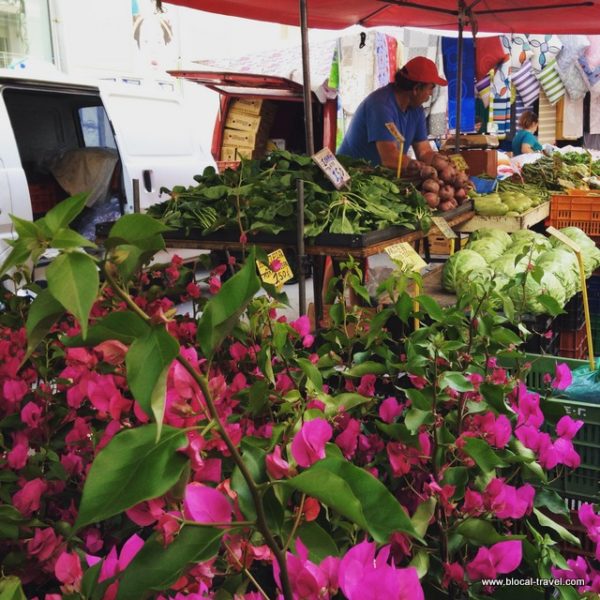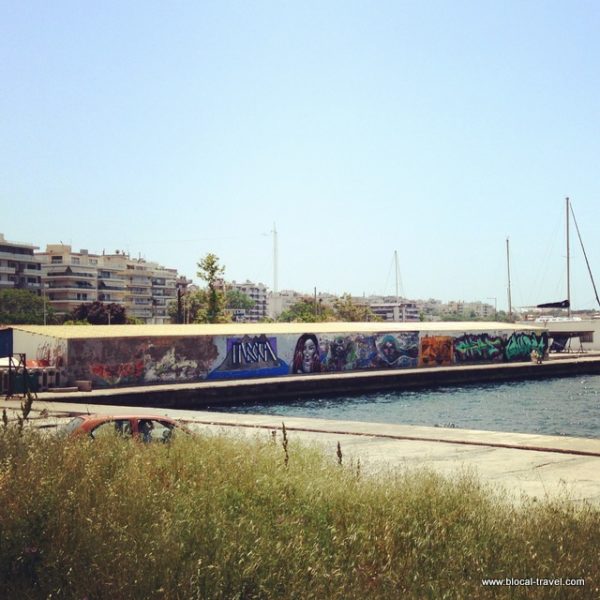
“Are you going to the islands?” an old man approached me outside Thessaloniki train station.
“Nope, I’m staying in town,” I replied, folding the city map and hiding it in my pocket.
“Why aren’t you going to the islands? Everybody goes to the islands to drink ouzo and party on the beach. I can help you find a ticket to go to the islands.”
I asked him to show me the way to the hotel instead but, since he was firmly convinced that, as a foreigner with a backpack, I must head to the islands, I said goodbye and took the first street away from the station.
Mainland Greece is totally underrated and I am determined to show the world that this country isn’t an archipelago. And so, after one amazing week in Athens, this time I travelled to Thessaloniki, the Balkan capital of Greece, an important metropolis since the Roman period and the second largest and wealthiest city of the Byzantine Empire. A city that, in this time of the year, smells of jasmine and salty sea.

Here is what I liked the most:
Thessaloniki > Ano Poli, the old town
The old town is the highest part of the city and from up there you can enjoy a beautiful view over Thessaloniki and the gulf of Thermaikos.
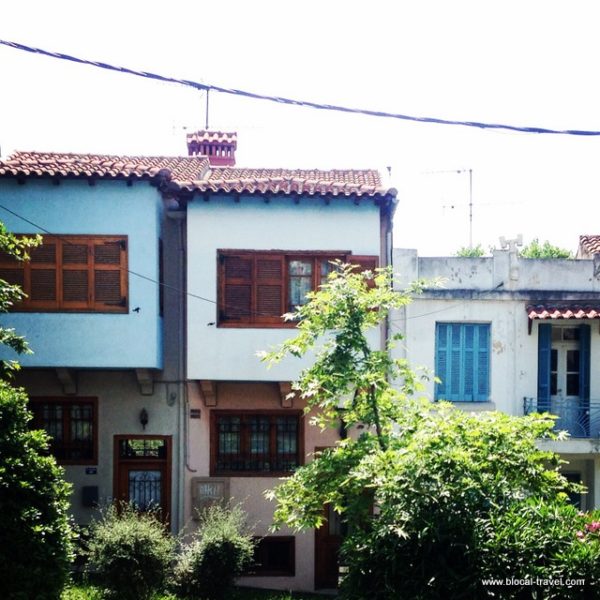

Being the only part of the city that survived the big fire of 1917, the area is still characterized by traditional Ottoman architecture, colorful houses in the Macedonian tradition, stone-paved streets and many stairways.


During the Ottoman period it was inhabited mainly by Turks, while the Greeks and the Jews lived around the port; here you will still find the charm of ancient Thessaloniki, enclosed within the remains of the city wall.

Ano Poli is the most traditional and picturesque area of Thessaloniki and it isn’t overcrowded by tourists as I had feared; it fact, I had the pleasure of wandering around its narrow and tortuous streets alone, breathing in the unique atmosphere of this ancient and very quiet neighbourhood.
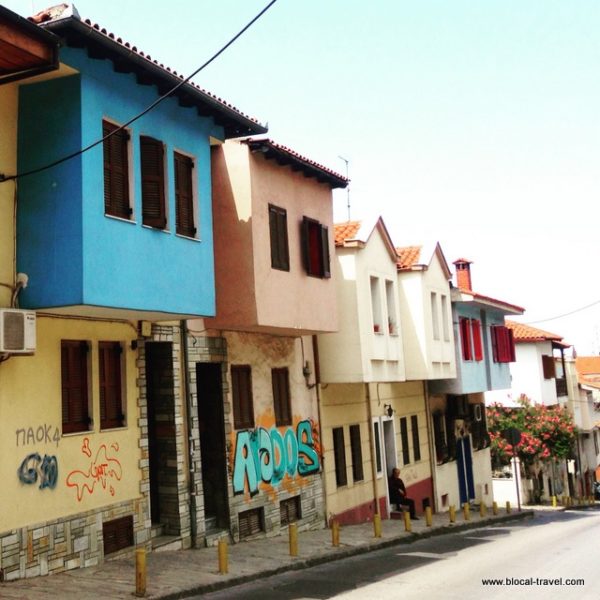

My suggestion is to spare yourself the uphill trek and reach the top of the hill by bus (22, 23), and then to descend it on foot; the area is mostly pedestrian and the fun is in getting lost among its steep streets, discovering an amazing panoramic view around every corner.


Here I visited the Eptapyrgio, an ancient fortress built during the Byzantine Empire, used at the beginning of the 15th century to resist the Turkish threat and which then served as a prison from the beginning of the 18th century to 1989.


The Armenian Cemetery of Thessaloniki
While walking back downtown, I found a tiny cemetery located near the hospital “Saint Dimitrios”, which later I found out is the Armenian Cemetery of Thessaloniki.

Many Armenians came to Greece to build the railway from Istanbul to Thessaloniki and, once the work was completed, they stayed in the area.

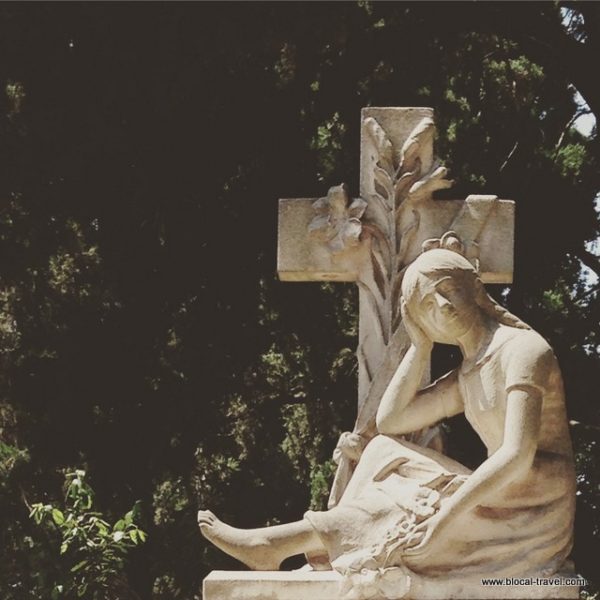
The first stable settlement of Armenians in Thessaloniki was in 1881 and the biggest growth in the community occurred after WW1; the Armenians were determined to maintain their identity, thus they built their own churches and, indeed, their own cemetery.

Street Art in Thessaloniki
There is no need to hide the fact that I’ve longed for a trip to Thessaloniki since reading about its street art scene. In Thessaloniki I found several big murals, especially in the city centre, plus a lot of old school graffiti all around the town. Some legal walls have been painted thanks to the support of The Box Art Gallery, while others are part of the Face Art Public Mural Project launched during the 15th Biennial of Young Artists in 2011.

This mural by BLU, whose art is politically driven, here passes a message about the financial crisis in Greece by representing the fall of a Parthenon made of euro coins. BLU underlines the fact that the Greek collapse is due to a system that has built a European Community around mere financial interest, rather than rooting it into our common cultural and social values, which originated in this country.

The big mural at the beginning of Tsimiski street by the Chinese street artist DALeast and the South African street artist Faith47 deals with the theme of violence against women by depicting a woman with bowed head and closed eyes holding the tail of a phoenix.
Thessaloniki Street Art Map
Here is an unpretentious street art map and a gallery of more street art works in Thessaloniki:
Do you want a personalised travel itinerary based on your interests and passions?
Then check out my concierge service ;)









Thessaloniki Seafront
As in every town with a seafront, my favourite activity in Thessaloniki was walking up and down its wide and bright seafront, getting the idea that a great part of the life of this town is concentrated there: in its bars, its parks, around its more or less contemporary sculptures, its bike lane and its skate areas.


My favourite part is the ‘Dock A’, where an old warehouse from the beginning of the 19th century now accommodates a cultural hub made up of the Cinema Museum, the State Museum of Contemporary Art and the Photography Museum, as well as a cinema and several cafés. I opted for the Photography Museum as the current exhibition is about south-eastern Europe, featuring works by 22 artists from 11 countries, who examine how the past continues to be present in this particular area, which has been marked by conflicts and wars, and which also happens to be my favourite area of Europe.


The exhibition is very interesting. I could recognize many Balkan towns I walked around and I’ve fallen in love with another Balkan destination: stay tuned, as I feel that soon I will be wandering around Bucharest!

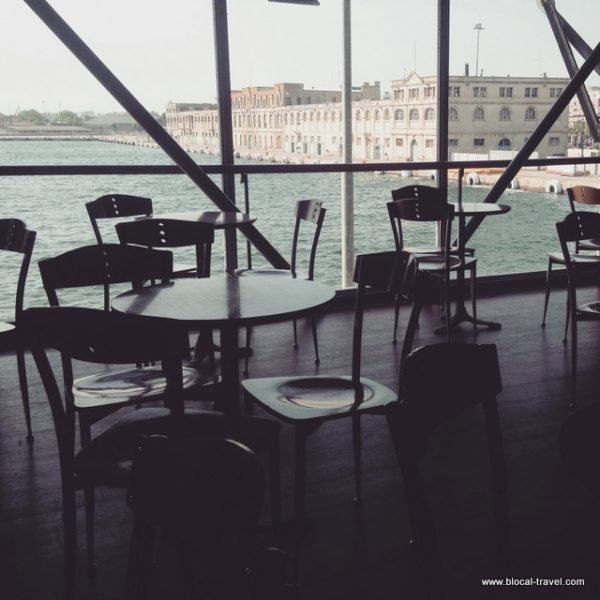
Thessaloniki > The Rotunda area
One of the most lively areas of Thessaloniki is the one around the Rotunda, a circular domed building from 306 a.d., which was been built either as a temple to Zeus or as a mausoleum to its founder.

This is also the area near the university, so it is full of nice cafés, bars, street food kiosks and youngsters strolling from one pub to another.


Food Markets in Thessaloniki
The most popular food markets in Thessaloniki are located in the city centre, one next to the other: Kapani is the oldest open market in the city, while the nearby Modiano market was designed between 1922 and 1930 by the architect Eli Modiano, from an important Jewish family from Thessaloniki.



Ambling through these markets you will smell spices, admire the many fish and meat counters, sample the ubiquitous Greek olives and sit inside the small traditional taverns to try some ‘mezedes’, which are the small plates of food served with ouzo. In these two traditional food markets you can find all kinds of goods, from fresh fruit and vegetables to cheese, clothes and –alas- souvenirs.

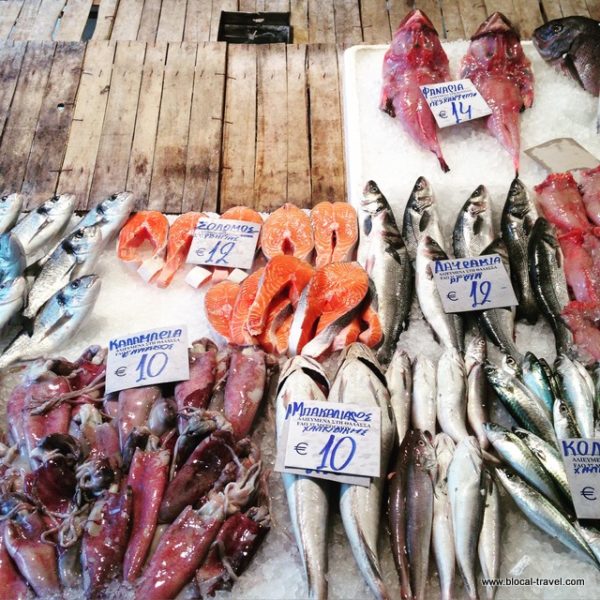

Thessaloniki: from Toumba to Kalamaria: unveiling the authentic soul of the city
As usual, on my first day in Thessaloniki I wanted to spot some ‘real people’ in the most authentic and genuine neighbourhoods of the town, and so I had a long walk from Toumba to Kalamaria Bay, coming across residential areas, several farmers’ markets, abandoned houses, busy roads and all kinds of ‘real life’ scenes.
During this long walk, the thing that surprised me the most is that, wherever I was, I could hear the singing and the playful laughs of the kids playing in the school playgrounds.
The area that I liked the most is Kalamaria Bay, with its lazy boats and clear sea. This area developed at the beginning of the 20th century to house refugees from the Greek diaspora in Georgia and Asia Minor, happened after the Hellenic-Turkish War, and it is still inhabited by their descendants today.
Here, the smell of jasmine everywhere melts with the salty sea, creating that peculiar scent which will always remind me of my two days in Thessaloniki.
Where to eat, drink, and hang out in Thessaloniki

Hamodrakas || Founded in 1926, it is the oldest restaurant in Thessaloniki. With a beautiful terrace overlooking the sea in the quiet bay of Kalamaria, this place offers traditional seafood cuisine. Here, I had stuffed calamari, the ever-present Greek salad and white wine.

Igglis || A nice tavern on a sunny square in Ano Poli, where you can eat traditional Greek food in the shadows of a grapevine.

Little Big House Café || This place is really cute and it has a nice roof-top where you can rest half-way up Ano Poli’s steep streets.
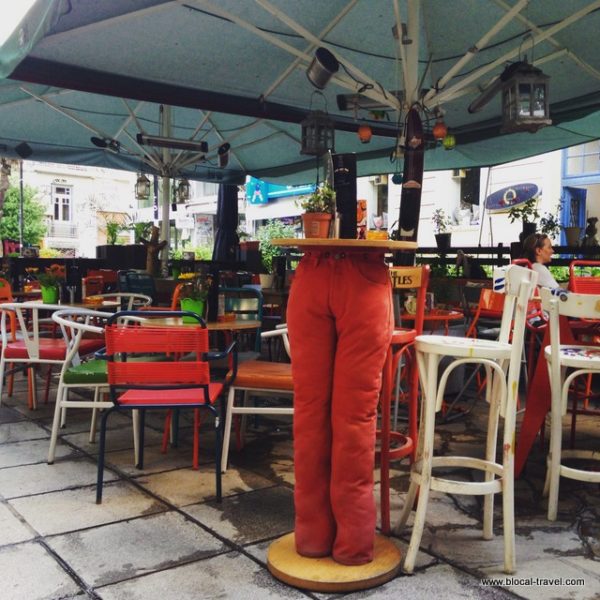
RE || A colourful café in the city centre beautifully designed by Minas Kosmidis to bring you back in time. Retro style, curious pop furniture and creamy cappuccino: the best place to begin your day in Thessaloniki.
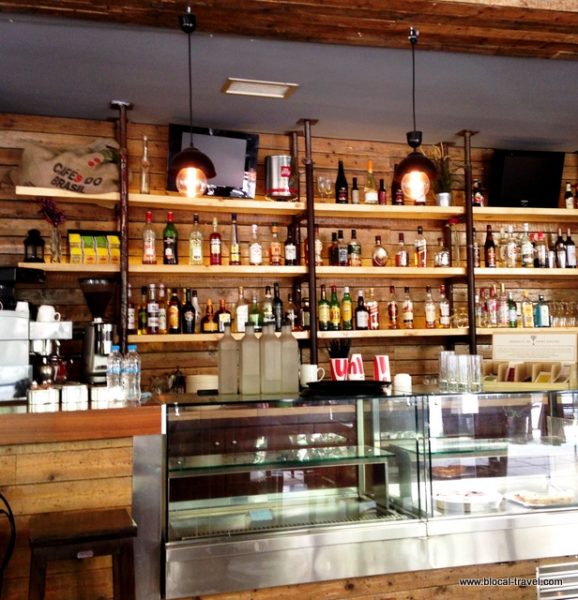
Barister || The name says it all: a hipster bar in Valaoritou, Thessaloniki’s nightlife area.
Off-the-beaten-path Thessaloniki Street Art Map
You can find these (and many more) alternative spots in my Thessaloniki Travel Google Map





